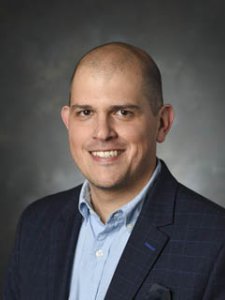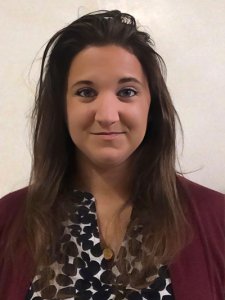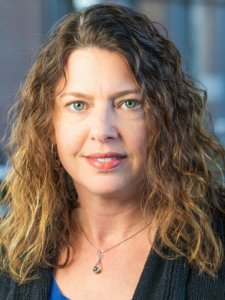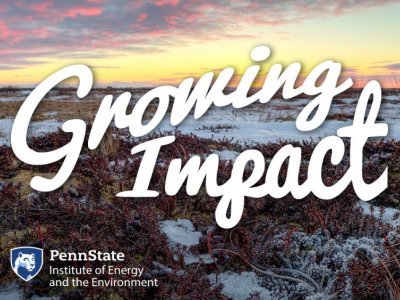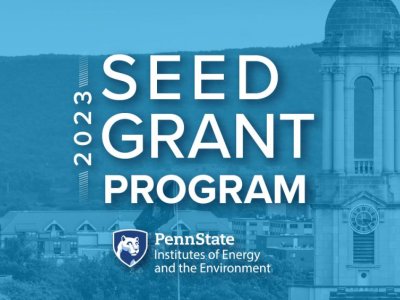28-minute listen/watch | 21-minute read | 1-minute teaser
Once a frozen haven, climate-driven rising temperatures are rapidly thawing the Arctic permafrost, posing a major threat to communities and infrastructure. Researchers are investigating how these changes will transform rivers, with potential consequences for erosion, sediment transport, and the entire Arctic landscape. Additionally, their project incorporates art to communicate these critical findings in an engaging way.
Transcript
Roberto Fernández
The Department of Energy, the White House, you know, they've got infrastructure up there in Alaska, and they're worried, you know, about these thawing landscapes and how potential erosion of this landscapes might, might change, you know, and affect infrastructure in the communities.
Host
Welcome to Growing Impact, a podcast by the Institute of Energy and the Environment at Penn State. Each month, Growing Impact explores the projects of Penn State researchers who are solving some of the world's most challenging energy and environmental issues. Each project has been funded through a seed grant program that's facilitated through IEE. I'm your host, Kevin Sliman.
For centuries, there have been places on Earth with very cold climates where the temperature rarely rises above freezing. Ice and permafrost have been constants in these landscapes as people moved in and built roads, pipelines, and airports. Today, with global temperatures rising, some frozen regions are experiencing a thaw. And there are concerns about what impacts rising temperatures will have on the ground and existing infrastructure.
A research team is investigating how these frozen landscapes may evolve because of warming, including how rivers in the region could change and how river erosion and sediment transport could be impacted.
Can everyone go around and introduce themselves? Can you provide your name, your title, and a little bit about your work?
Roberto Fernández
So my name is Roberto Fernández. I'm from Costa Rica. I've been living abroad for 14 years now and working in the realm of water resources engineering, with a particular interest in how water erodes sand, mud, how it melts ice, basically how it interacts with infrastructure or, with the landscapes around us. I do lab experiments and some fieldwork to try to understand some of these processes.
Anastasia Piliouras
I'm Anastasia Piliouras. I'm an assistant professor in the Department of Geosciences here at Penn State, and my research is generally on coastal landscape change. So I'm interested in how a wide variety of environments at the coast change over time, respond to things like climate change. And I do kind of a mix of things, but for the last seven or so years, I've been really focused on cold environments, in particular, that are really vulnerable to climate change in a lot of different ways. And kind of similar to Roberto, I do some experiments, but I also do some computer modeling as well as remote sensing using satellite-based data and some fieldwork, as well.
Talley Fisher
I'm Talley Fisher, I'm a sculptor and a research artist at the Huck Institutes of the Life Sciences, as well as the Institute of Energy and the Environment. I'm part of the SciArt group. We seek interdisciplinary collaborations with scientists, faculty, researchers to help communicate and represent the scientific concepts and research that they're doing in order to help understand these kind of complex systems and make them more accessible to a wider audience.
We've done a number of interactive art installations, for example, the Zombie Ant installation, which brings the world of zombie ants to life.

Host
So let's dive into the project. I just want to talk about these cold areas. Can we define permafrost, and can we discuss what makes these areas so unique?
Roberto Fernández
About a fifth of the Earth is either covered in ice or is underlain with permafrost. It’s telling that, you know, for many years, we've focused on some of the, you know, landscape processes, sediment erosion processes, sediment transport processes, and, you know, temperate areas. Some people have done work in tropical areas, but any focus on cold regions has been very specific and not necessarily due to basic science.
You know, they don't want to answer fundamental questions about how these landscapes change. And now with climate change and people, you know, switching their focus to cold regions, the Department of Energy, White House, you know, they've got infrastructure up there in Alaska, and they're worried, you know, about these thawing landscapes and how potential erosion of these landscapes might, might change, you know, and affect infrastructure in the communities that live in those areas. So it's a reason I would say shift in focus. Not that recent, but relatively new compared to other areas of the world. And, why are they unique? They're not as unique as any others on Earth, you know, they're all special. I come from a tropical region, and I love to study tropical mountain rivers as well.
But we have, you know, a very good opportunity to try to understand this, this changing landscapes under the effects of global warming, climate change, and what that might do to, you know, rivers, how they might evolve, how coastal shorelines might change.
Anastasia Piliouras
You know, in terms of defining permafrost also for those who don't know. So we refer to permafrost as any ground or, I guess, material that remains below zero degrees Celsius for at least two years continually. So some people will call it perennially frozen ground. The assumption is if it's below zero degrees Celsius, it is likely frozen. And so that in itself does kind of make these areas unique because you've got perennially frozen ground and now it's starting to thaw.
And it can be really difficult to figure out what that's going to do at a larger scale, whether that's to infrastructure like Roberto talked about or whether that's to like the carbon that's stored in the soil, which is a big concern for lots of people and how that might contribute to, to further climate change. And so that, you know, the fact that we have all this frozen ground and it's been there for a long time, and now it is thawing, makes it both important and interesting as well as concerning, to, to study from a lot of different aspects.
Host
How is climate change impacting these areas? In my brain, right, I think things are getting warmer, so therefore the things are either melting or thawing. And is there more to it, or is it really that simple?
Roberto Fernández
I think there might be more to it. There's a recent publication by a group of Italian colleagues, and they started looking at images of this area taken from satellites and looking at, in particular, rivers with bends, meandering rivers. And when we scoped out this project, we're thinking, you know, there's going to be a lot more sediment, you know, material from the banks in the bed of the river available because it's no longer kind of glued in place because of the ice, you know, keeping it there, fixed in place.
So all this new material is going to be eroded away, and these rivers are going to change. What they're seeing is that in some regions, things are getting warm so fast that there's actually time for vegetation to grow. And then the roots of some of these plants actually manage to kind of provide some cohesion to those banks of those rivers. So they're not eroding as fast as we thought. You know, before we considered vegetation, we thought, well, they're just gonna erode away. But now there's also this interplay of, okay, if it's fast enough, then vegetation might have time to colonize and try to kind of give some lee room, you know, for these rivers to not change as much. But we don't know, that might be specific to the regions that they focused on. We don't know that this is true everywhere.
Anastasia Piliouras
Yeah, I would say I agree with that. I mean, that study was pretty recent, and it's hard to know how applicable that's going to be, you know, long-term and broad scale. But it's, you know, things are going to warm and things are going to thaw. Right? I think we all agree on that, that there's all the other complications of a changing environment.
So whether that's vegetation, being able to come in, whether it's thinking about how the hydrology of the river is going to change, so how much water is in the river and when does that water come? What's going to happen to the ice that's usually in the rivers, you know, could that affect the environment in some other way if it changes the time when it's there, and the time when it's not. There's impacts on ecosystems that come with that. So there's a lot of, there's a lot of factors that will change. And then feedbacks between those factors that make it even more complicated.
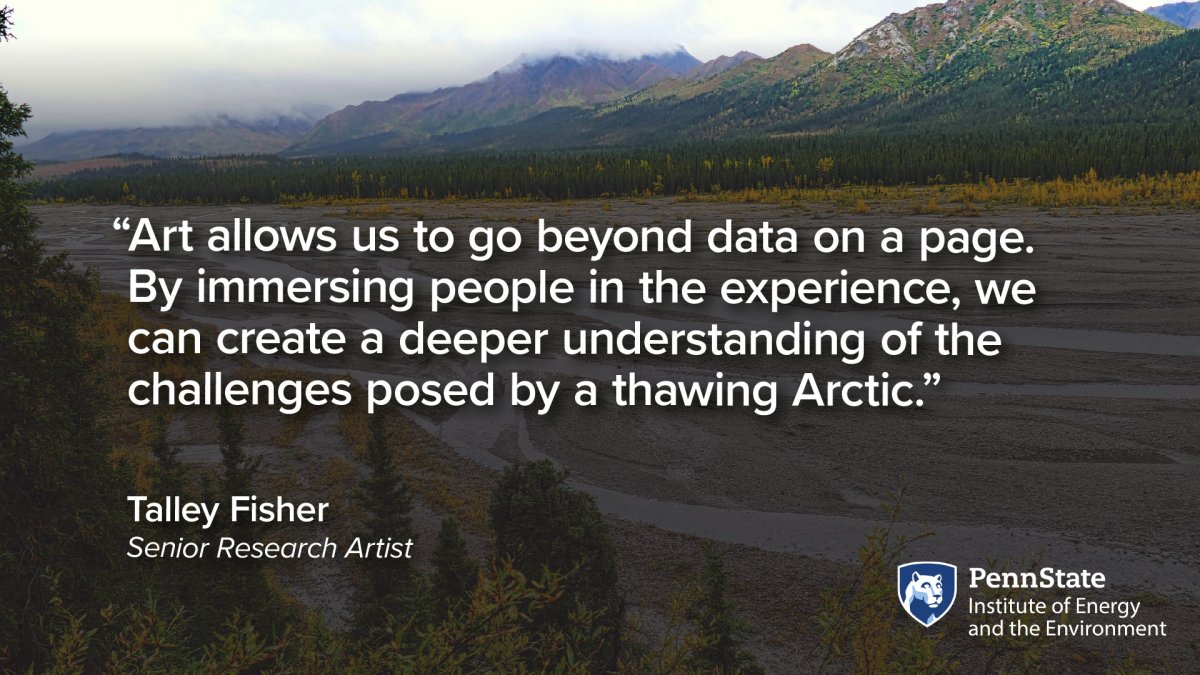
Host
Can we talk a little bit about erosion and the erosive processes that occurred during thawing? Can you help me understand what's happening when these... as things thaw and as things start to move, what kind of things are affected and how are they affected?
Anastasia Piliouras
Specifically, in this project, you know, we're looking at erosion of riverbanks. So I'm going to talk about, you know, specifically erosion of riverbanks. So typically in a river where things are not frozen, let's say, so we've just got water flowing in the river, and we've got some banks in a bed made up of, you know, sand and silt and maybe there's some gravel, different kinds of sediments. The sediments in the banks in the bed will move, or erode, by the river if the river is strong enough basically to move them, right? So you've got to have enough strength in the river to kind of move those sediments out of the bank and transport them down the river.
When you freeze those sediments in a permafrost environment, you have to be able to thaw the permafrost as well, to be able to then mechanically erode the banks, and so it's a little bit of a different process than if the ice were not there in the soil. If you didn't have that frozen permafrost. So then the question becomes, well, if the soil is frozen, how do things erode? But also if the soil was frozen and then thaws, how will it erode after that? Is it the same process as if it were never frozen before? Or is it somehow different? What's the rate of thawing? Is it just thawing from the fact that the climate's warming? Or do we think about how the temperature of the river might also change, and that might affect how fast things can thaw? So, it's really all about figuring out what's happening in the water. And how does that affect its ability to move sediments, whether they're frozen now, used to be frozen, or were never frozen before.
Roberto Fernández
The only thoughts I had as you were talking about this is thinking about, you know, again, rivers with bends, meandering rivers. They tend to have, you know, a shallow inner part of the bend and a deeper outer part of the bend. So they deposit sediments on the shallow part. That's why it's shallow, because the water flows slower on that inside part of the bend, and it flows faster on the outside of the bend. So if we start getting bigger sediment input from upstream due to time, due to excessive erosion, that deposition in those bars on the inner part of bends, regardless of the ambient temperature, is going to, you know, push the river against the outer bank.
So as Anastasia mentioned before, you know, there's feedbacks between the variables. So even if it might not be, you know, just warming that's thawing the soil, the river temperature and then this, you know, sediment deposition on the inner part of the bend pushing the water towards the outer part will lead to some mechanical erosion, you know, fluvial erosion, just because of the action of water. Lots of interesting things to look at from the erosion point of view and how that all plays out with the hydrology of the river.
Host
As areas thaw, what infrastructure is being affected, and how is it being affected?
Roberto Fernández
Anything and everything that's ever been built in these landscapes can suffer because whatever their design processes are for their foundations, etc., they rely on a resistance from the ground underneath. So airports, roads, they're built on soil that's been frozen for decades, centuries. And all of a sudden all that stuff's going to be, going to, you know, kind of soften out and that's going to lead to issues.
And now specifically with rivers, you know, if you have communities that have coastal infrastructure or little, you know, docks, little harbors or ports, I don't know how big they might be. If we think about the communities that rely or that live in these landscapes, they're going to suffer. If we think about infrastructure that might be impacted, in terms of the Department of Energy, I know there's concern in terms of pipelines for oil, etc. So, there's many different components to it in terms of how infrastructure might be affected.
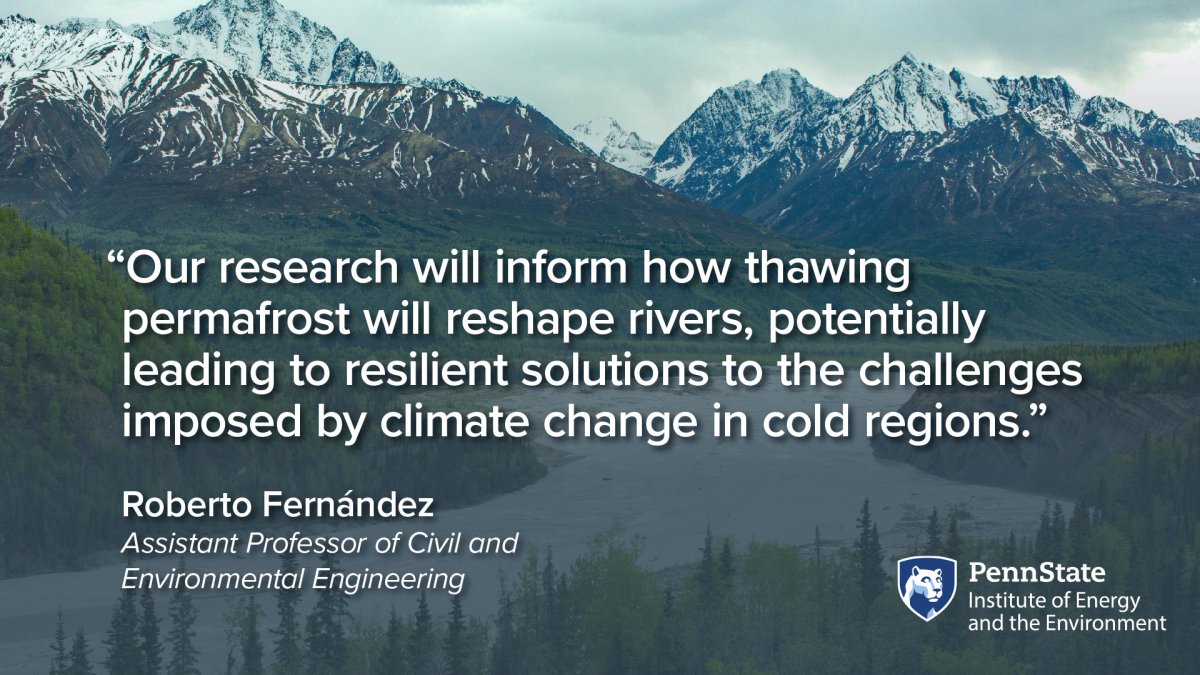
Anastasia Piliouras
I absolutely agree. It's I mean, it's everything up there. Everything is going to be subject to permafrost thaw and the subsidence, or the sinking of the land, that comes with that. And you can see really terrifying photos of, you know, people's homes going sideways as, as part of the land sinks and the rest of it doesn't, if you have localized thaw. And then thinking about in terms of the rivers because we are expecting, well, we think fast, faster, thaw, or faster river erosion as things thaw, you know, there are lots of communities on riverbanks as well, people establish where the water is. And so, you know, I think it is also a concern, maybe especially around rivers, where we do have lots of communities living in these high latitude environments where, you know, rates of erosion could certainly go up and put, you know, their communities at risk as well.
Roberto Fernández
And rivers have, you know, for a given amount of water in the river, they have a transport capacity. So there's only so much sediment they can move. So if we end up having a lot more in the river, the river can just decide to create a new channel. You know, it can jump out of its current channel, that's called an avulsion and just find a new path, you know, which, again, could lead not only to landscape changes in those areas, but, you know, to community impacts.
I know it's kind of a gloomy, you know, view of things, but that's kind of with our current understanding of how rivers work, you know, and how erosion works, just having, you know, less glue in the system to stick sediment in place, and then stuff's just going to move around. So in my head, you know, there's lots of potential changes coming their way.
And it's going to be hard, you know, to find other communities with you know, engineers, geoscientists need to come up with, you know, new solutions and then also rely on the local knowledge. I think these communities have been there for many centuries, and they can be quite resilient, even if they haven't experienced such things. They know the landscape.
They're also a good place, you know, a good resource to think about in terms of they can adapt. But the main message, I think, is that, you know, there needs to be a way to, to adapt, not to react.
Host
All right. So let's dive into your project specifically. Can we talk about the goals of the project and what you're looking to achieve?
Roberto Fernández
A few years ago, I did some experiments to look at how meltwater channels on ice formed and evolved. Again, if you haven't already figured it out, my interest is mostly on meandering rivers, rivers with bends. And I was looking at these channels, in the lab, you know, using small ice blocks. So when I joined Penn State, I wanted, you know, to continue doing that kind of work. And this opportunity with IEE seemed like a good place, you know, to start pushing that along. And then knowing Anastasia was here and Anastasia's interests in permafrost seemed like, like a good, you know, opportunity to try to not only work with ice, but also start thinking about permafrost.
So, the goals of the project are to look, you know, at the small-scale processes, if you will, the particle-to-particle processes that will eventually lead to landscape change. How do particles get eroded away from a riverbank? So we're going to be making, you know, some ice blocks in the lab. We're going to make different mixtures of permafrost, informed, you know, by realistic data, we’re trying to just kind of think about, all right, what's going to happen if you have water at different temperatures and if you have permafrost composed of, of different materials.
So to start simple, you know, we'll have just ice. Then we can think about adding sand of a given particle size: sand grains that are course, sand grains that are fine. And then if we want to keep complicating things, we can add smaller sediment and think about how will these things interact. But the main thing is we want to first quantify erosion rates of permafrost substrates.
Host
Getting this data, what do you hope to do with it?
Anastasia Piliouras
I think the first step is to get this data and gain that fundamental understanding that we really don't have right now in the scientific community of "how does erosion happen when the banks are frozen?" So that's kind of step one is like, how does this even work? Because we really don't know in a natural system. And then being able to take that understanding of, well, this might be what we expect the baseline to be in present day and think about, sure, let's we can complicate things more. And we could do lots more experiments and we could do larger experiments and we could do different experiments. But perhaps more importantly, taking that baseline understanding and thinking about how to translate it into what's going to happen in the future, thinking about how resilient or vulnerable different environments might be based on what the permafrost looks like there.
And so, at least from my perspective, what I always am trying to think about in the science of landscape change is what can we learn about how the landscapes behave now and then build on that to think about how they're going to behave in the future, as things change. So that would be kind of, it's kind of a big picture, lofty goal, that's maybe not super tangible, but we really need that baseline knowledge to be able to even try to get there.
Roberto Fernández
Yeah. And one thing that maybe hasn't been discussed in our conversation is, you know, we've discussed tools that people take images acquired from satellites and so remote sensing information. There's also people who go out on the field and do different, you know, spend time there taking different measurements. And why do we continue to talk about experiments? Because we can control many of the variables that come into play. So we can really isolate a single variable and understand how that affects the process.
In the field, you kind of get what you get, if you have bad weather, if your instrument’s not working, you're out there, you can't fix it. You know, you just got a week or two there or whatever, and that's it. In the lab, you can go back and repeat an experiment, make sure that what you got is not, you know, just random. It's the actual thing. So and you can control every variable in the process, so it gives us a very good, you know, window into the different aspects of the process. And we can control each one of them to really inform, you know, how people might eventually come up with a computer model to see how these landscapes evolve.
So we test all the conditions and come up with some useful information, parameters, etc. for people to use. And think about how the landscapes also might change.
Host
An interesting and I think unique component of this is the goal of communicating the information to a wider audience. And one of the ways you want to do that is through art. And so can we talk a little bit how you plan to use art to communicate about the project, and maybe even some of the work, Talley, that you've done in the past that you've used art to help communicate?
Talley Fisher
We feel, you know, at the SciArt group and the Huck that the collaboration between artists and scientists can really kind of catalyze creativity. And by exploring their research and their findings, taking the data and interpreting it in new ways — that could mean sculpture, digital media, interactive installations — we can better kind of distribute and communicate to a wider audience, make it a little more relatable.
These are somewhat complicated scientific processes that not everybody might be able to visualize or understand. So by us both observing and perhaps participating in some of the research, we're hoping that can inform an interesting interactive installation. Listening to you talk about the, you know, river systems and hydrology and, and how the landscape changes over time, taking the sort of basic knowledge that you're collecting, translating it in a way that the community might understand what those impacts really mean for them, and then using art to interpret that and perhaps come up with some solutions.
There's a lot of community work done by expressing the way the community might be feeling or might be understanding what these processes are that might impact them. Some of the previous work that the SciArt group has done, we just explored the wonderful world of Wolbachia, which is a really fascinating bacteria that has great potential for solving some really devastating infectious diseases.
So we, learned about how Wolbachia is in over 50% of insects and, created an art installation that not only has the researchers sort of discussing the research, but visually describes what that impact might look like, how many people are affected by these infectious diseases, and how the researchers are taking Wolbachia, injecting mosquitoes, and then these mosquito populations, the infectious disease drops by maybe 90%. These kinds of processes are what we're trying to do with the SciArt group and, you know, interpreting them for the public.
Host
Listening to Anastasia and Roberto, I also can hear all kinds of really cool opportunities to use art to help explain it. So can I ask Roberto and Anastasia, what prompted you to think maybe art could be a great way to help communicate this?
Roberto Fernández
So when I was based in the UK as a postdoc, I had the opportunity to apply for a research fellowship funded by the Leverhulme Trust. Historically, Leverhulme Trust, they have early career awards for science projects, but they're a lot more biased towards the humanities, arts and humanities. So I started thinking on how to best pitch to their board, you know, a research topic, looking at meltwater channels on ice and meandering channels formed by dissolution.
So limestone is soluble, and it also forms in a little channel. So I was interested in doing experiments in both of those areas. And I started thinking about, you know, how to pitch this. And I came up with this title, about natural sculptures carved by melting and dissolution and referring to erosion as nature's most successful artist. And that worked out, you know, I got the fellowship. And in planning it, it helped me think of, you know, I should start talking with people who do this kind of work. And when I was in the UK, I contacted a Costa Rican sculptor that's based in Italy, and covid kind of affected the whole thing. But we have this plan, you know, to come up with this big limestone block that we would put in the library of the university, and we would just start eroding it. And then, you know, students as they came in and their freshman year would see a change, as they also changed during their studies, you know. So I had all this vision about how to communicate the science of erosion, you know, to at least to the university community.
And then when I came here at first meeting, I went to IEE-related stuff. And I met Talley and said, oh, we need to talk, you know, because I'm already excited about these things and they can make it happen. So for me, you know, I've been thinking a bit more about this, and there's a lot of misinformation there.
And people will choose to read one thing or the other and just not believing in one thing or the other. But if they actually see something happening in front of their eyes, they cannot say, well, maybe they can, but I would expect them to be less inclined to deny the science behind it. So art is a good way to move beyond, you know, communicating an idea or a research finding and letting people experience it. And that's kind of where it lies for me. It lets people experience it as opposed to, you know, reading about it.
Talley Fisher
What you're talking about are these processes that happen over a long period of time, right? But there are, for example, I'm imagining putting a microphone and listening to the sound of the erosion, right, and having some sort of audio track over potential video that is showing your erosion processes because you're speeding it up. We don't have to wait all this time to watch what might happen.
I'm imagining audio visual, photographs, and people can actually experience it. You can feel it, maybe. You know, maybe there's some temperature-related process that that's happening. You can touch it, you can feel it. And I think you're right, if people are immersed in it and it's not just the data on a page, they may better understand it and, think about it in different way.
Host
Can we talk a little bit about success? What will success look like at the end of the project?
Roberto Fernández
You know, if I think only of this one-year seed funding grant from IEE, I want to have, you know, enough data that, to go two ways. One, you know, to start, you know, writing proposals that would continue to fund more exciting research, but also, you know, have enough that we can also start doing the, the art component beyond, you know, the small pilot, if you will, that that we would be able to put together within this project. So I want to see those two, you know, continue to move forward together. So I guess success would be you know, we learned a lot from the experience. We have enough to justify more.
Anastasia Piliouras
Yeah. I agree with everything that Roberto said. I'll just add on, I think, you know, one goal of this also is to maybe help better establish collaboration across our team. And so I kind of feel like we're already doing that, and so we're becoming successful. But, you know, using this year to like figure out how to work together to figure out what our interests are, where they overlap and align, and what those future proposals, you know, might look like if we want to, you know, keep on in this theme. So I think collaboration is definitely also a part of that in terms of having success in addition to, of course, you know, the data.
Host
Well, thank you all. Thank you Roberto, Anastasia, Talley. Thank you for being on Growing Impact. I really appreciate your time.
Roberto Fernández
Thanks for having us. If people listening want to get in touch, I can be found, you know, on the, former Twitter X app @IceMeanders. I'm also on Blue Sky, as of this week, @IceMeanders as well. And then if you prefer email, roberto@psu.edu.
Anastasia Piliouras
Thanks, Kevin. This was great. So yeah, if anybody wants to get in touch I'm just anastasia@psu.edu. Happy to always chat science.
Talley Fisher
And if anybody is interested in collaborating with the SciArt group we can be found at hucksciart.com.
Host
This has been season four, episode nine of Growing Impact. Thanks again to Roberto Fernández, Anastasia Piliouras, and Talley Fisher for speaking with me about their project. To watch a video version of this episode and to learn more about the research team, visit iee.psu.edu/podcast. Once you're there, you'll find previous episodes, transcripts, related graphics, and so much more.
Our creative director is Chris Komlenic, with graphic design and video production by Brenna Buck, and promotional and social media support by Tori Indivero. Join us again next month as we continue our exploration of Penn State research and its growing impact. Thanks for listening.

